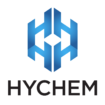What lies beneath? Uncovering the truth about vinyl

Polyvinyl Chloride, commonly known as PVC or vinyl is used extensively throughout Australia. It can be found in packaging, bottles, toys, furnishings and most notably in flooring.
In fact, its versatility and chemical resistance has resulted in PVC being one of the most produced forms of plastic in the world.
However, the environmental impacts and health concerns from both the production and use of vinyl are stirring up the market and prompting manufacturers to come up with better solutions.
Can vinyl be considered safe?
There are currently mixed reports about the health side effects and environmental impacts of both the production and use of PVC, however the facts suggest that it’s time to seek alternatives.
First and foremost, vinyl does not break down. Items made from PVC will retain their form for decades making it difficult to dispose of in an environmentally friendly way.
According to the Vinyl Council of Australia, in 2014 around 190,000 tonnes of PVC was used in Australia alone. Although PVC can be recycled to form new products, the challenge lies in getting the material clean, consistent in composition and in sufficient amounts on a regular basis to allow for proper recycling.
According to the Defence PVC policy 2014, published by the Australian Department of Defence, “a major concern with PVC is the risk of toxic air emissions during the manufacturing process, which has the potential to impact on human health and the environment.”
Other concerns are related to the disposal of PVC including the accidental burning of PVC products and the leaching of contaminants from PVC products being disposed at landfills.
According to the Greenpeace “PVC-Free Future: A Review of Restrictions and PVC free Policies Worldwide,” Greenpeace has been campaigning for the phase out of organochlorines (compounds that contain covalently bonded atoms of chlorine)since 1987, because their production leads to the release of hazardous substances which are persistent, toxic or bioaccumulative.
The production of PVC plastic uses the largest proportion of chlorine produced (30 percent) and is a major source of hazardous substances in the environment, both during manufacture and disposal. As well as using chlorine as a raw material, PVC contains many additives, some of which are also hazardous, such as heavy metal stabilisers or phthalate softeners.
Hygiene begins on the floor
Floor coverings made from PVC are often used in hospitals, medical centres, commercial kitchens and supermarkets. Although PVC is both durable and resilient to most oils and chemicals, the PVC coating is often only a few micrometres thick and prone to wear.
It has been found that germs colonise in these worn out patches of the flooring, not to mention settling within the seams between each of the PVC sheets. In facilities involving food handling or health care, it’s no question that hygiene and sanitation are of utmost importance, so seamless, resilient flooring alternatives are a smart option.
A gap-free solution
Liquid coatings are the answer to seamless flooring. Not only do they minimise germ build-up, they also prevent moisture from seeping beneath the flooring – a common problem with standard vinyl applications.
Technological advances in liquid flooring are also improving the product lifespan and are enabling contractors to reduce their project downtimes.
Hychem has been manufacturing a range of construction resins since 1987 to include epoxy, polyurethane and MMA coatings for both commercial as well as industrial flooring.
Latest innovation in polyurethane flooring
The latest seamless flooring solution to hit the Australian market is Viacor’s German engineered Viasol Elastic, imported to Australia by Hychem. The unique polyurethane formula is a premium system that is non-stick, self-levelling and recyclable.
Chris Bauer from Hychem has said the product is one of the fastest drying and most easy to apply liquid coatings on the market.
“It has all of the benefits of vinyl including flexibility and softness under foot, which is particularly important for industries where people spend long hours on their feet such as in hospitals and within the food and beverage industries.
“However, unlike vinyl, it is eco-friendly and free from many of the health risks associated with PVC.
“The product has a long lifespan, with excellent abrasion resistance and won’t wear away, even in high traffic areas or under office swivel chairs.
“It is very easy to maintain which can reduce cleaning and other maintenance expenses, as there are no parts that can break away or collect dirt and bacteria,” said Mr Bauer.
“Architects and designers like the product as it comes in a range of colours and textures, making it an attractive flooring solution.
“It boasts fool-proof application where the particles that create the design are guaranteed to be uniformly applied without fuss.”
Other benefits of Viacor’s Viasol Elastic include:
? The ability to achieve both a matt or gloss finish, with a choice in degree of slip resistance
? Low Volatile Organic Compound (VOC) emissions which complies with German AgBB standards.
? Hygienic, pore-free and impervious to fluids
? Good chemical resistance
? Permanent UV resistance.
To view more of the Hychem range of seamless flooring visit www.hychem.com.au
